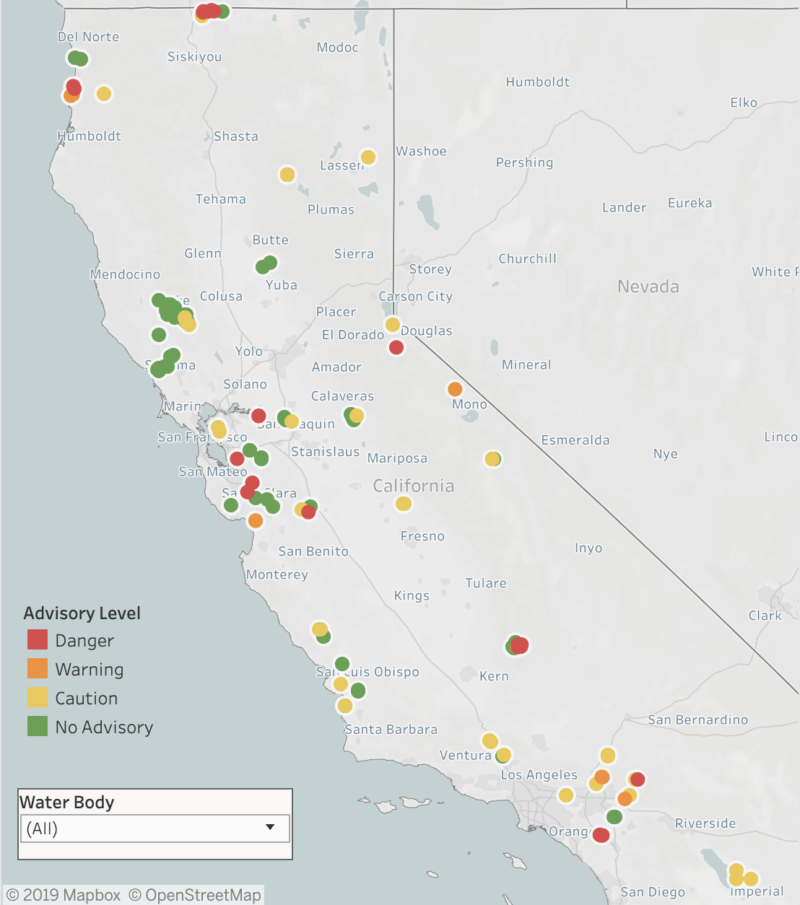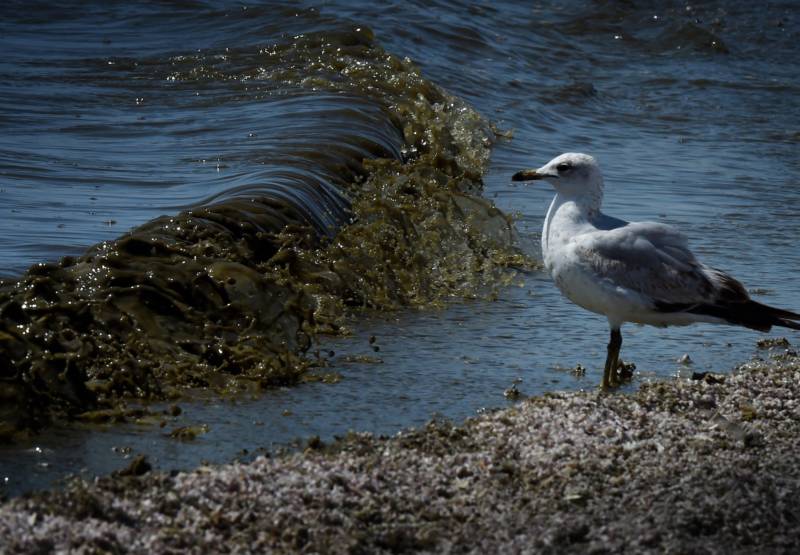California water officials on Friday warned people who plan to enjoy the state’s lakes and reservoirs this Labor Day weekend to be cautious about harmful blue-green algae.
The state Water Resources Control Board said some areas of at least 10 lakes and reservoirs have a “danger” level of algal toxin, which can make people sick and kill animals.
The board released a map of the state’s lakes and reservoirs with a dangerous level of toxic algae, which includes Big Bear Lake, Lake Elsinore, Lake Isabella, San Luis Reservoir and Almaden Lake.
Officials are recommending people and their pets and livestock stay out of the water and avoid drinking it until further notice.

Algae blooms that produce toxins and can sicken swimmers and harm fish are becoming an increasing concern nationwide, causing water warnings this year throughout the country.

